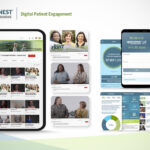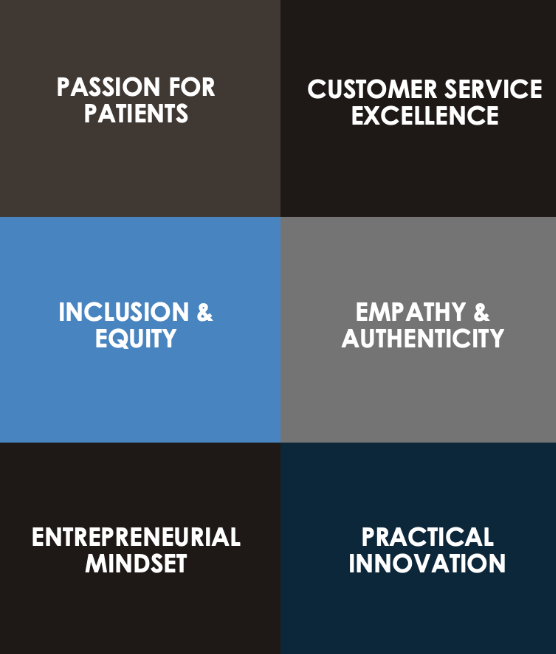Do you remember that first Zoom team happy hour? We stayed at home and tried to get used to our “new normal.” Boy, did we get used to it! So much so that it no longer feels like the new normal, it’s just…normal. 2020 was when we got used to connecting virtually for things we would otherwise meet up in person: What’s currently good enough for board meetings and opera performances is certainly also appropriate for Ambassador story shares and advisory boards. But what about the upcoming few months? How are we expecting patient engagement to evolve through 2021? Let’s look at a few of the trends we’re seeing on the horizon.
1. Distance, Closeness, and Healing from Crisis
If 2020 exposed anything, it’s how much we all need one another. It should never have been about socialdistancing, just physical distancing. We’ve learned that coming apart isolates us psychologically. It hurts our economy and our physical health, with many people reporting putting on “the COVID 19” (whether they’re weighing 19 pounds extra, or another number on the scale). On top of that, people avoided medical treatments, and not just elective procedures. Adherence levels have dropped, and symptoms and disease progression are up.
2021 will hopefully be about healing, physically and otherwise. Many people are hurting, and there is much awareness among those who are doing “fine” that many of their fellow humans are in crisis. Snow’s surveys through 2020 repeatedly showed that patients are increasingly facing financial hardships. Many are uncertain if they can make the rent or pay their mortgage; many also don’t know for sure if they can put food on the table. At the same time, there appears to be a much bigger preparedness to volunteer time and money to help out.
So let us forecast, and hope this prediction is accurate: 2021 will bring us all together, will help us heal and recover from a year in crisis. People will regain a sense of control over their lives, they will retake ownership of their health, and they will appreciate the presence of fellow human beings.
2. Telehealth: Coming Out of Band-Aid Mode
When crisis disrupts society’s ordinary way of functioning, people find unconventional solutions to address a pressing need. Those solutions then often turn out to be so popular that they become the new norm, even after the crisis subsides. During World War II, when military service absorbed much of the male workforce, women filled jobs which they traditionally weren’t able to access. Once that pivot to “Rosie the Riveter” happened, there was no going back to the old way of doing things. People noticed that there was much to gain from allowing every person to explore their full professional potential.
In the same way, we expect telehealth to remain an important pathway for patients to interact with their healthcare providers. What used to be a low-cost solution for patients to quickly seek medical advice turned into an important tool to keep patients from physically visiting their doctor. Snow’s patient surveys during the pandemic showed that acceptance of telehealth improved over time: At first, many patients reluctantly accepted telehealth as a means to temporarily receive basic care, but as time went by, people got a taste for it. Many patients are now happy to continue to get as much of their treatment remotely as reasonably possible, regardless of the coronavirus threat.
3. Creating Value Virtually
In 2021, as the COVID-vaccines are starting to penetrate the population, getting us closer to herd immunity, we will increasingly see the current public health crisis in the rear-view mirror. There’s no doubt that for an uncertain amount of time, there will be a hangover-effect: the current predominance of virtual connections over in-person connections will not disappear overnight, and the return to physical meetings will be gradual.
Decisions for or against a certain meeting format are currently almost exclusively based on epidemiological considerations. That won’t be the case forever. But because we went through this experience, we can certainly expect that a lot of learning has happened, expanding our options. If we want to hold a meeting in person, we can hold it in person. If we want to do it virtually, we can. The decision can be based on goals, strategies, and resources as opposed to people’s tech skills or a dearth of choices. Bottom line: We will go back to in-person strategies, but the baseline portion of virtual events among all events will be higher than pre-pandemic.
4. Digital & Data
Improvements in our digital infrastructure will strengthen this trend: 5G will become ubiquitous; there will be fewer hang-ups and people will move and share more data between patients, healthcare professionals, and biopharma companies. It’s not if you engage digitally, it’s how. How you do it is important, not just from the point of view of running the most innovative digital campaign that turns heads and creates buzz, but also from an ethical and regulatory one: Doctors, biopharma companies, healthcare agencies—every professional who engages with patients must be extremely sensitive to data and privacy protection issues.
A good data-driven strategy will make sure patients are maximizing the benefit they can derive from the healthcare system. Getting this right is not optional but a critical precondition to success. The infrastructure is in place, the technology is mature. The rest is now up to skill, empathy and an understanding of industry dynamics.
5. Aligning Brand Priorities with Patient Priorities
The disruption of our lives has also changed many of our priorities. For example, children have had to stay at home for much of 2020, leading to an entirely new set of needs and challenges. With that, we’ve seen a heightened interest in patient engagement that takes this new reality into account: Virtual and physical picture books explaining certain conditions to a young audience are more and more in demand, and parents are grateful to have appropriate content for their kids. Patient engagement in 2021 will continue to align more closely with the lived reality of those we’re trying to reach, even as that reality changes, sometimes nearly overnight.














